Lower Back Pain (Part One)
Definition
Lower back pain is described as an immediate, strong, and persistent pain or as a dull pain that is felt in the lower part of the back. It is common and affects the majority of people during their lifetime. In most cases, it starts suddenly and is caused by a muscle strain as a result of heavy physical work, forced movement, during a strain with lifting weights or uncontrolled movement, rotation of the trunk, and less commonly after a fall.
But also after a long, uncomfortable position, whether standing or sitting. Other conditions that cause lower back pain include: spinal stenosis, arthritis (osteoarthritis), spinal infections (osteomyelitis), spinal tumors, and vertebral fractures.
Almost all of us will experience lower back pain at some point in our life. This pain can range from mild to severe. It can be short-term or long-term. However, lower back pain can cause difficulties in performing many daily activities.
ANATOMY
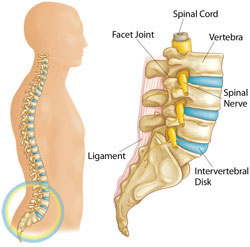
Knowing your back and how it works can help you understand why you have lower back pain.
Your back is made up of small bones, called vertebrae, which are stacked on top of each other. Muscles, ligaments, nerves, and intervertebral discs are complementary parts of your back.
Vertebrae
The spine is a sturdy and flexible bone structure made up of a collection of vertebrae (spine bones), generally 32 or 34, and extends from the base of the skull to the tail. It serves as a supporting structure of the body, as a place for muscle attachment, and as a protector of the spinal cord.
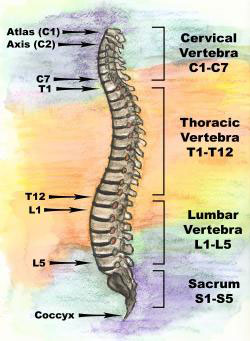
The spine is formed from 5 segments:
- the neck formed by 7 vertebrae
- the thoracic formed by 12 vertebrae connected to the ribs
- the lumbar formed by 5 vertebrae
- the sacrum formed by 5 vertebrae (in adults, these are fused together)
- the coccyx formed by 4 to 6 fused vertebrae
The spine protects the spinal cord and participates in most of the body's movements.
Seen from the side, the spine has several curves, called physiological curvatures: cervical lordosis, thoracic kyphosis, and lumbar lordosis. Various pathological conditions can deform these curves. The spine displays 4 curves that function to increase the flexibility of the spine.
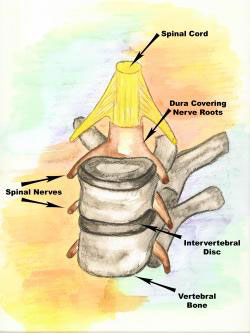
These include:
- Cervical lordosis
- (straightening of the spine);
- Thoracic kyphosis;
- Lumbar lordosis;
- Sacral kyphosis

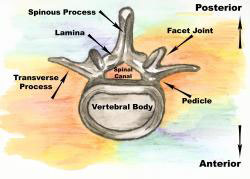
The Spinal Cord and Nerves
These "electrical cables" travel through the spinal canal and carry messages through the brain to the muscles. The nerves exit the spinal cord through corresponding openings in the vertebrae.
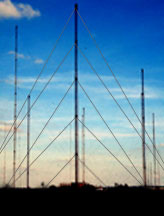
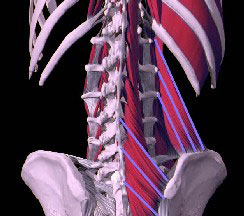
Muscles and Ligaments
These provide support and stability for your back and upper body. Strong ligaments connect the vertebrae to help keep the spine in position.
Facet Joints
Between the vertebrae are small joints that help the movement of the spine.
Intervertebral Discs
The spine is movable and durable thanks to intervertebral discs that separate one vertebra from another. Intervertebral discs function as real shock absorbers allowing the displacement of hundreds of kilos and reducing collisions during daily activities. Intervertebral discs serve to better distribute force and facilitate movement
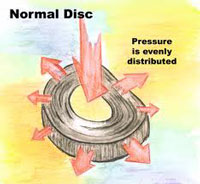
Intervertebral discs are flat and round, and about one cm thick. They are made up of two components
Annulus fibrosus.
This is the outer structure of the disc is like a flexible, strong, and tough ring. It helps connect the vertebrae.
Nucleus pulposus.
This is soft, jelly-like, and is the center of the annulus fibrosus. It gives the disc its weight-bearing (shock-absorbing capabilities).

I think that the description by the group of co-authors is readable for the interested parties. Thank you for your information
Sent by Anesti Pina, më 13 September 2013 në 10:36
Hello, I am Petriti. I had a problem with my back 5 years ago, which was a result of the work I did laying tiles, during which I spent almost 40 days barely able to get in and out of a car. However, it passed after I accidentally pulled an electrical cable with a lot of force, and the pain immediately subsided, and I haven't felt it since for 5 years. But today, I lifted a weight of almost 10 kg and my back started hurting again, making it hard for me to move. Please tell me some way to relieve this pain, Petriti
Sent by Petrit Zefi, më 30 October 2013 në 03:30
Petrit, I have had the same problem with the tiles after doing a lot of physiotherapy, the pain wouldn't go away, and it even gripped my leg. In 2010, I had surgery in Athens, and now I am much better, I don't have leg pain. Sometimes, when I work for extended hours, it hurts again, but after a short rest, the pain goes away. If you have leg pain or numbness in your fingers, I advise you to visit a neurosurgeon as soon as possible before the nerve weakens. You might need surgery for the operation to be 96% successful; the nerve shouldn't lose the strength of the leg, it's a matter of time
Sent by shkelzen, më 09 January 2014 në 16:09
I am Gjergji and I have been suffering from back pain for 4 months, I have numbness in my left buttock and I always feel it on the same side. Please give me some advice on how to get it to pass, thank you
Sent by gjergji, më 10 December 2014 në 07:56